Story and photos by Anita Westervelt, Texas Master Naturalist
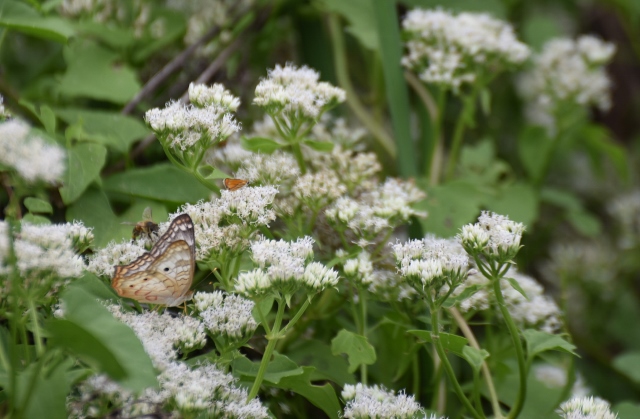
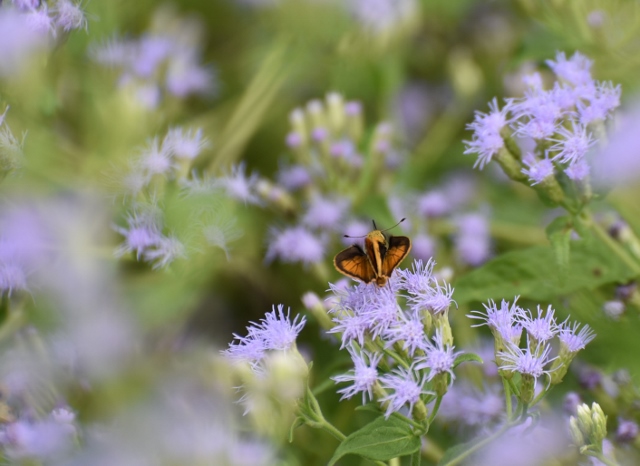
Climbing hemp weed (Mikania scandens) competes with all-time butterfly-attracting Valley favorite, Crucita — fall-blooming mistflower (Chromolaena odorata) — during the annual fall butterfly season.
While mistflower grows as a small shrub in a multitude of soils and growing conditions, climbing hemp weed is generally found growing near wet places, like resacas, ponds, irrigation canals and riverbanks. It is a perennial twining vine that seems to thrive in the humidity of late summer by wending its way through tree branches, dangling from palm fronds, covering shrubs and small trees and forming formidable mats.
While it is strengthening its summer footprint, the tiny white flowers never appear to be fully open, seeming to hover just at the brink of bud stage. Although reputedly an important butterfly nectar plant, it doesn’t draw in the insects, but by fall, climbing hemp vine is suddenly a hub of activity. The abundant blooms burst open, attracting butterflies, bees, flies and beetles.
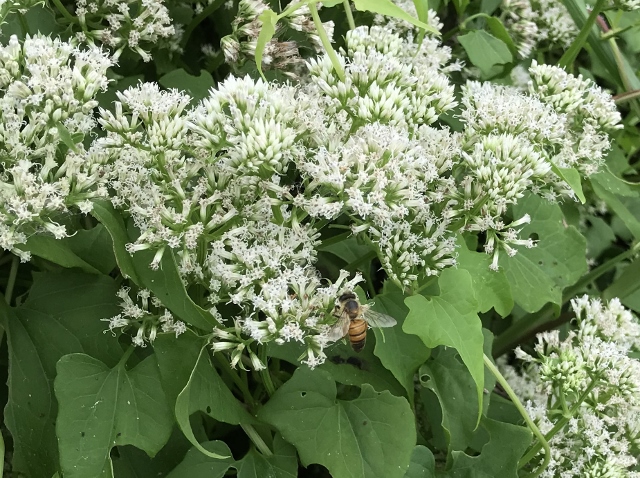
The most prevalent visitors are white peacock butterflies that don’t mind sharing the nectar with Western honey bees and those tiny vibrant-orange skippers, like the Southern skipperling, fiery skipper and the whirlabout butterflies. The flowers also draw the Harrisina coracina, a member of the forester moth family that is an all-black moth with feathery black antennae. Harrisina coracina look more like a thick-bodied wasp with a squared off tail and two tiny black dragon-fly-like wings than a traditional moth with four wings spread for flight.
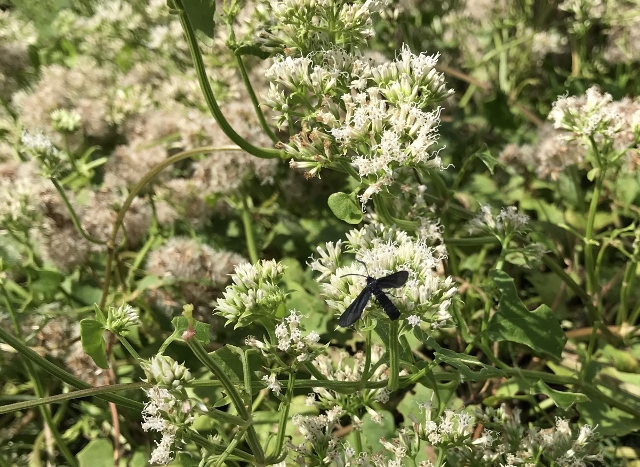
Shortly after their weeks of full-bloom glory, both species begin showing signs that their flowers are turning to seed. For climbing hemp weed, that stage displays a smoky-pink, rather messy looking aura after weeks of showing off well-defined, pristine white flowers. The lavender flower heads of crucita turn dark brown as the blooms begin to fade.
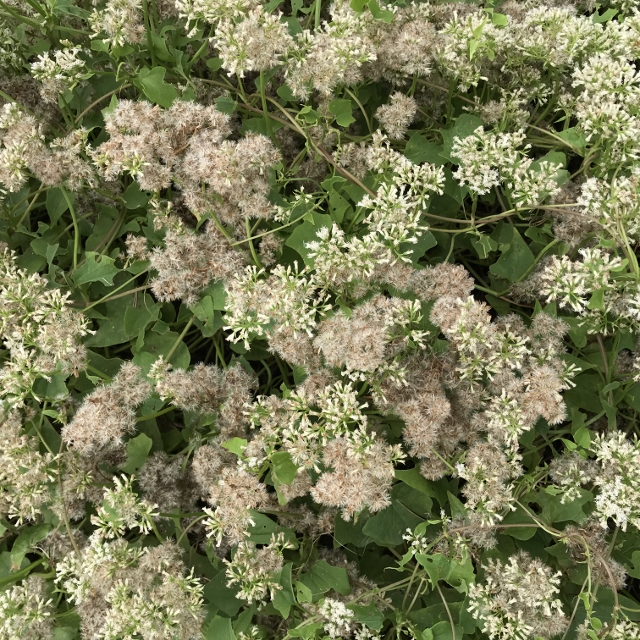
An interesting term for the fruit of climbing hemp weed, and other plants, like sunflowers, in the asteraceae family, is cypsela, which means a dry single-seeded fruit that does not split open during seed dispersal. Climbing hemp weed seed dispersal takes place by way of calyx tissue attached to the seed. Calyx tissue is a fine, funnel-shaped group of hair-like filaments attached to the seed that can be snagged by the wind and landing who knows where.
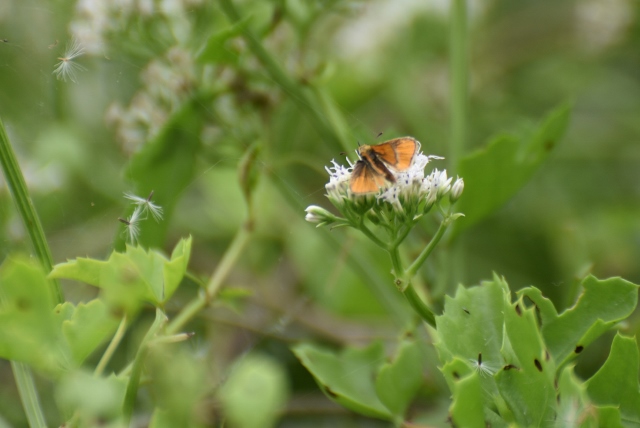
Climbing hemp weed has a large native distribution, from Southern Ontario, New England, south to Florida, west to Texas and south to Tamaulipas in Mexico where its preferred habitat is moist thickets and swamps. It is one of the few vines in the Asteraceae family that occur in Cameron and Hidalgo counties.
It is a host plant for the caterpillars of the little metalmark butterfly. The plant has attractive large but flimsy, heart-shaped grass-green leaves that are scalloped at the top and taper, dagger-like, to a long point.
Climbing hemp weed has been introduced on many Pacific Islands where it is considered an invasive species. Even in some areas of its native territory it is a quick-growing vine that can easily get out of hand, especially in hot, humid and moist conditions.
Wildflower.org and Davesgarden.com are good sources for native plant information.
